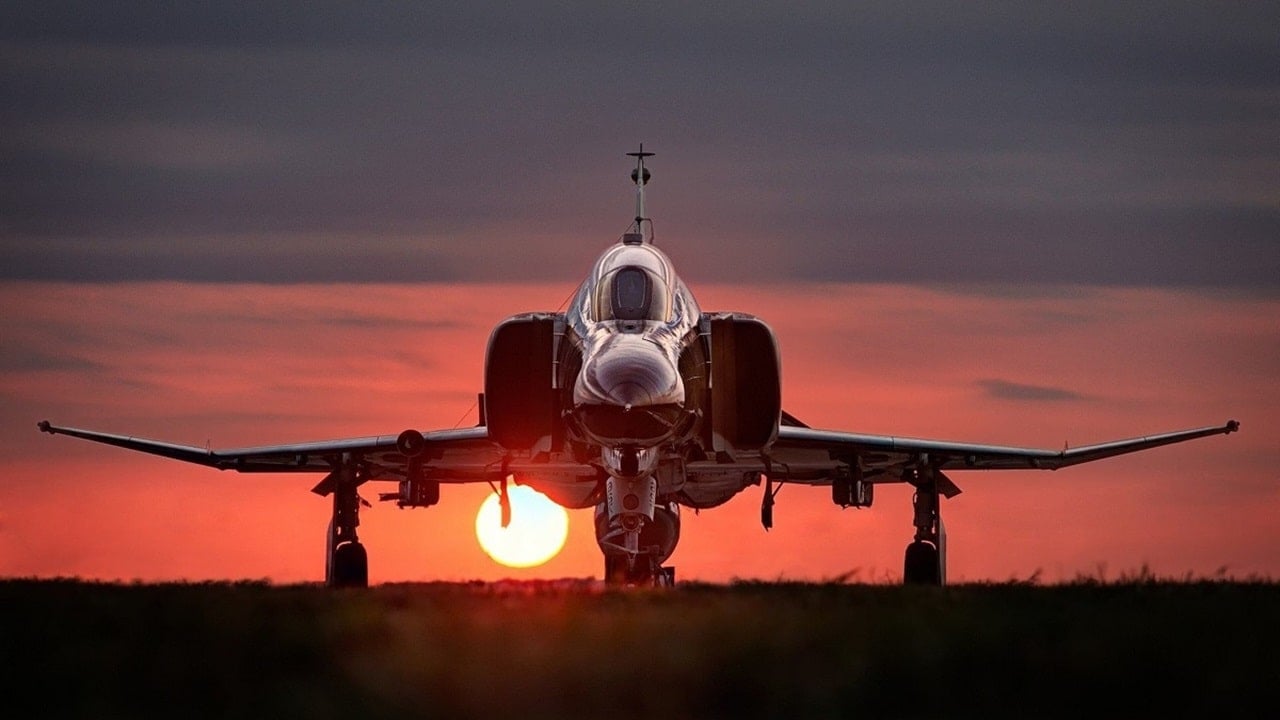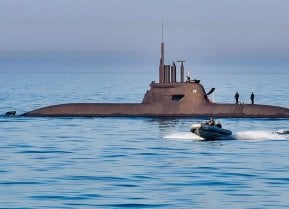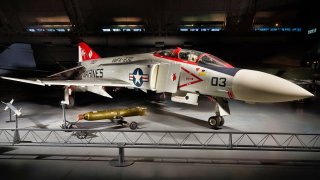Why Iran Still Flies the Ancient F-4 Phantom Fighter (Made in USA)
In addition to its fleet of Soviet MiG-29s, Su-24s, and Su-22s, Iran continues to fly the American-made F-14 Tomcat and F-4 Phantom.
How Iran still flies the F-4 Phantom Since Hamas’ October 7 massacre in Israel, Iranian-backed militias across the Middle East have launched scores of attacks targeting the U.S. and its assets in the region. As America’s self-declared top adversary, the Islamic Republic of Iran poses perhaps the largest threat to U.S. national interests in the Near East.
Tehran’s proxy apparatus may be quite formidable.
However, its aviation corps struggles from a lack of advanced airframes. In fact, Iranian pilots primarily rely on third and fourth-generation airframes first introduced back in the Cold War. In addition to its fleet of Soviet MiG-29s, Su-24s, and Su-22s, Iran continues to fly the American-made F-14 Tomcat and F-4 Phantom.
Introducing the F-4 Phantom:
In the early 1950s, internal studies concluded by the Navy indicated the need for a new type of attack fighter airframe. Around this time, manufacturer McDonnell Douglas got to work on developing more modern prototypes.
McDonnel’s design was ultimately worked into an al-weather fighter-bomber aircraft equipped with 11 external hardpoints for armaments. By the mid-1950s, however, the Navy incorporated new requirements to be fitted to its future airframe.
The service was already flying the Douglas A-4 Skyhawk and the F-8 Crusader for ground attack and dogfighting, respectively and now needed an all-weather airframe. In response to the Navy’s new request, McDonnell created the XF4H-1 prototype, culminating in the F-4 Phantom.
Named to honor the FH-1 Phantom, the first fighter jet developed by McDonnell, the F-4 was a powerhouse when first introduced to service. Powered by two nearly 18,000-pound-thrust J79-GE-17 General Electric engines, the F-4 could reach speeds of almost 1,500 miles per house with a range of 1,750 miles.
The sophisticated airframe was also equipped to lug almost 16,000 pounds of weapons, including air-to-air and air-to-ground missiles. Additionally, the Phantom can carry unguided, guided, and nuclear bombs.
While the F-4 was armed to the teeth, its initial lack of a built-in cannon and dependence on subpar newly-introduced missiles back in the day marred its track record in both the Korean and Vietnam Wars.
However, the Navy did not give up on the Phantom. Over the years, the fighter underwent a series of facelifts in order to retain its edge over U.S. adversaries. The service notably enhanced the Phantom’s wing slats and established the Top Gun training program to promote air combat training.
How did Iran get its hands on the Phantom?
Over its lifespan, more than 5,000 F-4s were distributed across the globe- including Iran. During the Cold War, the U.S. sought out allies in the region in order to form a better counter to the Soviets.
Former U.S. administrations supported the Shah of Iran, hoping that this monarchical government could effectively squash any Soviet expansionist intentions in the region. For this reason, the U.S. delivered a total of 32 F-4Ds, 177 F-4Es and 16 RF-4Es to Iran.
Once the 1979 Islamic Revolution disposed of the Shah and transferred power to the Islamic fundamentalist regime that remains today, the U.S. obviously regretted these previous transactions.
Iran still flies its F-4 fighters today:
During the Iran-Iraq War in the 1980s, Tehran heavily invested in its domestic manufacturing capabilities. Iran tasked engineers with reverse engineering and developing components for fighter jets, including the Phantom.
To maintain this rapidly aging fleet, Iran uses homegrown parts like glide weapons, improvised electric components and anti-ship missiles. However, most analysts concur that Iran’s domestic products are less sophisticated than Western or Russian systems.
A Defense Intelligence Agency (DIA) report claimed that the Iranian Air Force’s possible missions are centered around “air intercept, ground attack, and close air support with some aircraft capable of mid-air refueling…The IRIAF’s F-4 serves as Iran’s primary attack aircraft,” the DIA notes, despite the fact that this platform is so outdated. “To supplement its long-range strike capabilities, Iran could also attempt to use its regional proxies and limited air strike capability to attack an adversary’s critical infrastructure. Iran’s F-4 Phantoms could (be used) to attack its regional adversaries. However, these older platforms would be more vulnerable to air defenses than modern combat aircraft,” the report added.

In 2020, Tehran debuted its Qased 900kg electro-optic guided smart bombs during its annual Defenders of the Sky military exercise. Enhancements like this has helped Iran’s fleet of Phantoms remain somewhat relevant in the modern aviation space.
However, older platforms like the Phantom and F-14 Tomcat cannot hold up to more modern next-generation counterparts regardless of maintenance procedures. Iran is aware that its aerial capabilities are not on par with some of its adversaries, which is why Tehran utilized its regional proxy groups so heavily.
About the Author
Maya Carlin is an analyst with the Center for Security Policy and a former Anna Sobol Levy Fellow at IDC Herzliya in Israel. She has by-lines in many publications, including The National Interest, Jerusalem Post, and Times of Israel. You can follow her on Twitter: @MayaCarlin.
All images are Creative Commons.


